How To Check Storage On Mac? [Step By Step]
Are you eager to know how to check storage on Mac? There are various reasons you may want to do this. This article will outline the reasons for checking storage on any Mac device. Next, it will outline three basic methods for how to check storage on Mac. Read on to know how each method works.
Why Should We Check Storage on Mac?
As a Mac user, you want to check storage for several reasons. Below are some of the common reasons to check storage:
1. To check used and available storage space
First, you may want to check storage on Mac to know the amount of storage space your current files have occupied. Such files could include pictures, documents, music, etc. Alongside the used space, checking storage also lets you know the available storage space to accommodate more files.
2. To know the amount of free space
Sometimes, you may want to install a large application or store a considerably large file. Before making such an attempt, it's wise to check the amount of free space on your Mac. By checking the free space, you can decide whether installing a new application is possible. If the amount of free space is not enough, you'll first need to find ways to create more space.
3. To know if your Mac needs extra free storage space
Checking storage space on Mac is important because it lets you know whether you need to create extra space before installing a program or storing more files. Based on the available space, you can confirm whether your program will fit into it and still leave space for additional files. If that isn't the case, you'll need to obtain extra free storage space.
4. To know if you need to upgrade your Mac
Checking storage space on Mac also allows you to know whether it's the right time to upgrade to a larger hard drive that can accommodate all your files. For example, if your Mac has a 1TB hard disk that is almost full, you may consider upgrading to a 2TB or 3TB hard disk. You can also consider purchasing a tool for automatic backup to external hard drive.
In conclusion, checking storage on Mac is important because it allows you to check used and available storage space, know the amount of free space, know if you need extra free space, and know whether it's the right time to upgrade your Mac storage.
How to Check Storage on Mac? [3 Ways]
In this section, you'll learn about three methods to check the storage on Mac. We'll provide detailed steps for each method alongside operational images if possible.
- Way 1. Check Your Storage via "About This Mac"
- Way 2. Check Your Mac Storage via "Disk Utility"
- Way 3. Check Your Mac Storage via "System Information"
Way 1. Check Your Storage via "About This Mac"
The About This Mac Feature provides an easy way to check the space left on your Mac. It gives you a simple breakdown of your Mac storage. You can check for storage using this feature in the following steps:
Step 1. Click on the Apple icon and choose "About This Mac" in the list of options.
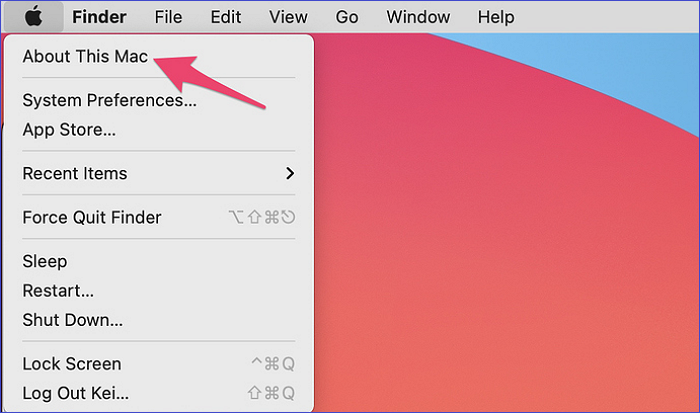
Step 2. Navigate to the "Storage" tab.
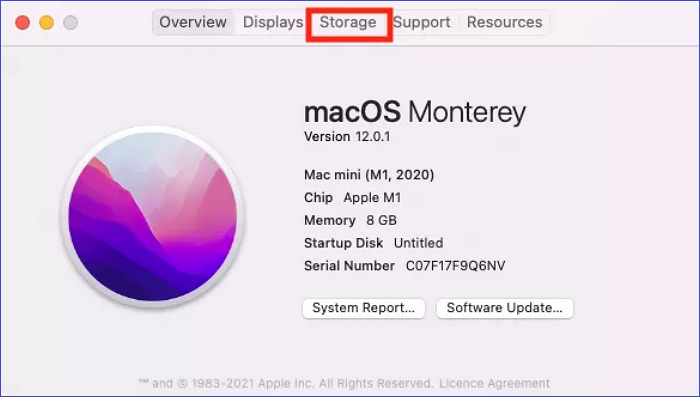
Step 3. The system will now display the amount of storage available on your device. It will display this in the form of a bar graph. The marked bar graph can represent different categories, including System Data, Apps, Bin, Documents, etc. To know the amount of available space, hover your mouse over the white section of the bar graph.

Way 2. Check Your Mac Storage via "Disk Utility"
The Disk Utility app allows you to control your internal and external storage as a Mac user. With this app, you can create disk images, format drives, or combine several disks into one. You can use Disk Utility to check Mac storage through the following steps:
Step 1. Open the Finder app.
Step 2. Navigate to the left panel and click on "Applications." Open the "Utilities" folder.
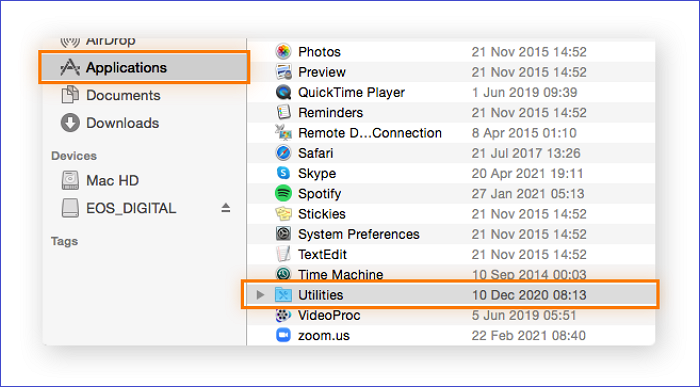
Step 3. Next, open Disk Utility.
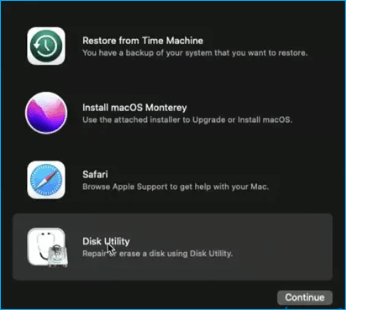
Step 4. Once on Disk Utility, navigate to the left and select the drive you want to check storage. You'll see used and available space on the selected drive.
Way 3. Check Your Mac Storage via "System Information"
Another way to check storage on your Mac is using a built-in tool called Storage Information. This tool provides an easier way to check the storage details of your main hard drive and other connected drives. You can check your Mac storage using System Information in the following steps:
Step 1. Hold the Option key and click the Apple icon on the left of your screen.
Step 2. Select "System Information."
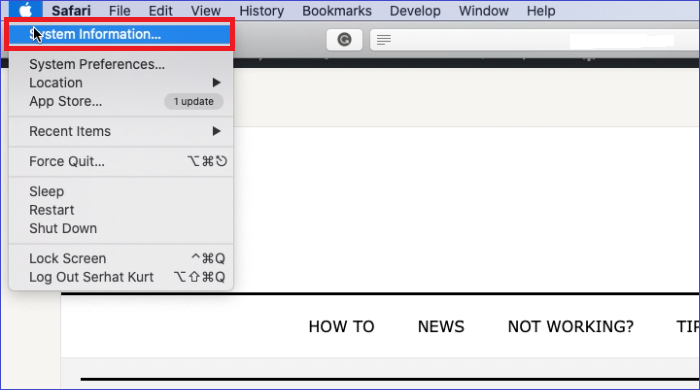
Step 3. Click to expand the "Hardware" section.
Step 4. Next, click on "Storage." This will show you the entire system information for your drive, including free space and the total device capacity.
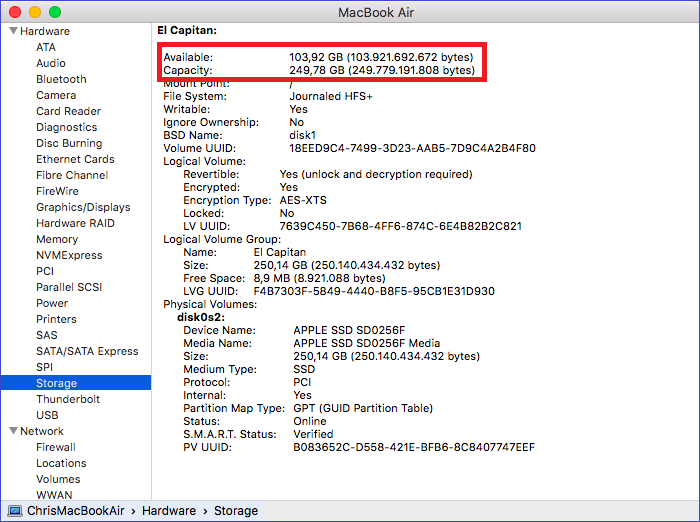
Apart from the three methods mentioned above, you can also check the storage on Mac by:
- Using the "Get Info" feature in the Finder app.
- Running a terminal command.
- Using the "Quick Look" feature in the Finder app.
Conclusion
Checking storage on Mac is important because it lets you know the used/free space, whether you need extra storage space, or if it's time to upgrade your Mac. The three methods on how to check storage on Mac include using the About This Mac feature, Disk Utility, or System Information.
These methods will allow you to view the available and used disk space. This is important if you want to save new files or install more applications.
FAQs
Some of the questions you may want to know about checking storage on Mac include the following.
1. What Is My Storage So Full on Mac?
Things like duplicate files, junk files, caches, or temporary files can make your storage full. You should try clearing these files to create more space in your disk.
2. Why Is My Mac Saying I have no Storage?
You'll receive this warning message if your disk space is almost full. As a remedy, you should try freeing up some space or upgrading to a larger drive.
3. How Do I Empty My Mac Cache?
You can achieve this through the following steps:
Step 1. While on Finder, select "Go" then "Go to Folder."
Step 2. Copy the following command into the search bar: ~/Library/Caches
Step 3. Next, click on the "Go" button. This will take you to the folder that contains cached files on your device.
Step 4. Once the list of cached files displays, press Command+A to select the files.
Step 5. Press Command+Delete to remove the selected files.
Step 6. Enter your Mac password on the popup that displays to complete the process. The system will then empty your Mac cache.
Related Articles
- How to Decide the Raid Redundancy over Performance [Everything You Should Know]
- How to Fix Smart Failure Predicted on Hard Disk 0, 2, 4
- Free PDF Editor - Top 6 Best Free PDF Editors 2020 Update
- Windows Update Troubleshooter Download Full Version [2022 Tips]